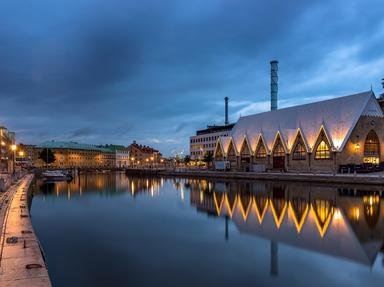Quiz Answer Key and Fun Facts
1. There were several kings of Sweden before the 14th century but details are sketchy. However, a personal union of three northern European kingdoms brought some stability to Sweden in 1397 by having a single monarch rule. What were the other two countries in the Kalmar Union?
2. Sweden left the Kalmar Union in 1523. What was the fate of Sweden for the next three hundred years?
3. Sweden has maintained a position as a neutral state. When did its state of neutrality begin?
4. Sweden entered the 21st century with a stable government that was well-respected by its people. What type of government does Sweden uphold?
5. The four Scandinavian national flags are very similar. What is unique about the Swedish flag compared with the other three?
6. Sweden occupies the eastern portion of the Scandinavian peninsula. Apart from a bridge connection to Denmark, which countries share a land border with Sweden?
7. As none of Sweden lies above the Arctic Circle, it is not possible to see the Northern Lights in Sweden. True or false?
8. The distance between the capitals, Stockholm to Oslo and Stockholm to Helsinki is about the same, 500km. However, it takes twice as long to drive between Stockholm and Helsinki than it does between Stockholm and Oslo. Why?
9. While Sweden has a diverse geographical landscape, which one of the following landscapes describes Sweden's geography best?
10. Stockholm is the capital of Sweden and the largest city in Sweden. What is its most notable geographical feature?
11. Gothenburg is Sweden's second largest city. What geographical feature is most important to its history and economy?
12. Lutheranism is the State Church of Sweden. True or False?
13. In 1952 Sweden held both the summer Olympic Games and the FIFA Soccer World Cup. True or false?
14. For a country that did not exceed 10 million people until 2017, Sweden has had its share of sporting superstars. Björn Borg, Mats Wilander and Stefan Edberg were tennis world number ones who won many tennis Grand Slam events. How many singles' tiles did they win between them?
15. There is a longstanding belief that Sweden's contribution to world wide cuisine has been its meatballs. However Swedish cuisine is diverse. Fika features heavily on the Swedish cuisine map. What is it?
Source: Author
1nn1
This quiz was reviewed by FunTrivia editor
agony before going online.
Any errors found in FunTrivia content are routinely corrected through our feedback system.
